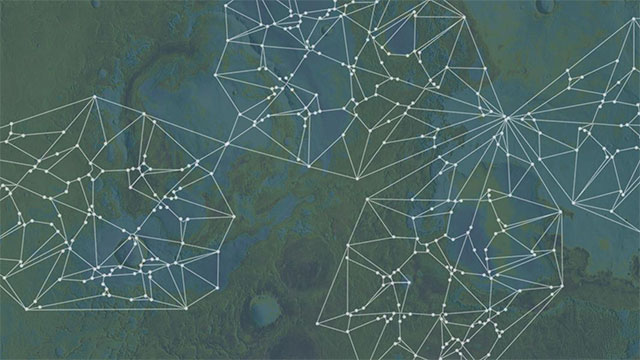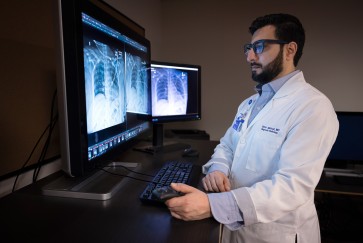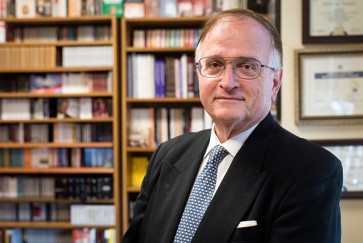Nanotechnology didn’t emerge as a field until the mid-1980s, but it is already radically changing the way we navigate the world, treat illnesses and injuries, and even protect ourselves from the sun.
Some of nanoscience’s most prominent leaders will unite this week to discuss the dramatic ways nanotechnology, nanomedicine and molecular architecture are shaping our lives. They also will discuss the field’s latest breakthroughs and greatest challenges.
Presented by the National Science and Technology Medals Foundation, “An Evening with Titans of Nanotechnology” will take place from 5:30 p.m. to 7:30 p.m. on Thursday, Nov. 8, in the White Auditorium at the Kellogg Global Hub, 2211 Campus Drive, Evanston.
The event will feature nanoscience pioneers Chad Mirkin and Sir Fraser Stoddart from Northwestern University and Sangeeta Bhatia and Robert Langer from MIT. Shana Kelley, who is a professor of chemistry, pharmaceutical sciences, biochemistry and biomedical engineering at the University of Toronto, will moderate the conversation.
Following the discussion, audience members will be able to participate in an open Q&A session.
The event is free and open to the public. Registration is strongly encouraged to guarantee admittance. For those unable to join in person, the event will be webcast live on Facebook and the National Science and Technology Medals Foundation’s website.
About the speakers
Mirkin is the director of Northwestern’s International Institute of Nanotechnology, the George B. Rathmann Professor of Chemistry in the Weinberg College of Arts and Sciences and a member of the Robert H. Lurie Comprehensive Cancer Center of Northwestern University. A world-renowned nanoscience expert, Mirkin discovered and developed spherical nucleic acids (SNAs), dip-pen nanolithography and numerous other contributions to supramolecular chemistry. He is one of an elite group of scientists elected into all three branches of the U.S. National Academies, has authored more than 720 manuscripts and has submitted more than 1,100 patents. He also founded multiple companies, including AuraSense, Exicure, TERA-print and CDJ Technologies.
“Nanotechnology as a scientific discipline is still in the very early stages of development,” Mirkin said. “Yet, significant impacts are already being made. By being at the forefront of this science, our research is beginning to address a broad range of global challenges in medicine, environmental science, food and water safety and other disciplines.”
Stoddart is the Board of Trustees Professor of Chemistry in Weinberg and a member of the International Institute of Nanotechnology and the Robert H. Lurie Comprehensive Cancer Center of Northwestern University. He received the 2016 Nobel Prize in Chemistry “for the design and synthesis of molecular machines.” By introducing the mechanical bond into chemical compounds, Stoddart became one of the few chemists to open up a new field of chemistry in the past 25 years. Leading to the fabrication of molecular switches and motors, the mechanical bond has been responsible for putting chemists at the forefront of the burgeoning field of molecular nanotechnology, which has implications ranging all the way from information technology to health care.
“This is a highly creative science. The world is your oyster,” Stoddart said. “It’s just like someone who is painting a picture or writing a novel or making a sculpture or composing a piece of music: you have a chance to be incredibly creative.”
Bhatia is a Howard Hughes Medical Institute Investigator and the John J. Dorothy Wilson Professor at MIT. She directs the Marble Center for Cancer Nanomedicine and is a member of the Ludwig Center for Molecular Oncology, which are both part of MIT’s Koch Institute for Integrative Cancer Research. Trained as a physician and engineering, Bhatia has developed technologies that interface living cells with synthetic systems, enabling new applications in tissue regeneration, stem cell differentiation, medical diagnostics and drug delivery.
“The human body is the ultimate machine — an interconnected system from molecule all the way up to organism. The more you learn about it, the more wonder you feel,” Bhatia said. “And when you have this toolkit -- micro- and nano-fabricated devices -- you start to realize that you can operate in the same exact scale that distinguishes between health and disease. You have kind of the perfect toolbox for tackling those challenges.”
Langer is an MIT Institute Professor, the highest honor for a faculty member at MIT. He often works at the intersection of medicine and biotechnology to pioneer new methods for drug delivery and controlled release systems. He also has more than 1,300 issued and pending patents. Langer has received more than 220 major awards and is one of four living individuals to have received both the United States Medal of Science (2006) and the United States National Medal of Technology and Innovation (2011).
“Some people get satisfaction out of pure science, which is great,” Langer said. “For me, it is also seeing that science can change the world, to make it a different place, hopefully, a better place.”
Kelley, the moderator, works in a variety of areas spanning biophysical/bioanalytical chemistry, chemical biology and nanotechnology. She has pioneered new methods for tracking molecular and cellular analytes with unprecedented sensitivity.
The National Science and Technology Medals Foundation is a non-profit organization working to build a future of scientific and technological excellence in the United States by connecting students to National Medal of Science and National Medal of Technology and Innovation Laureates. To learn more about the Foundation, visit www.nationalmedals.org.


